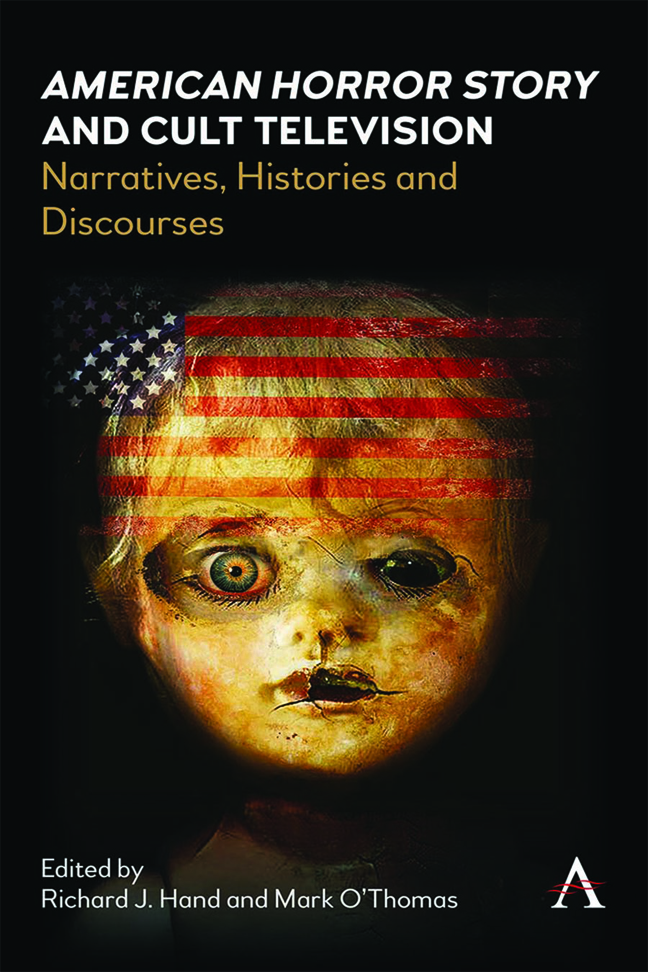Chapter 1 - ‘I’m really not trying to be cheesy in this moustache twisty way, but it gets really bad. Things that you can't even really imagine…’ (Sarah Paulson): American Horror Story and the Horror Ensemble Paradigm
Published online by Cambridge University Press: 01 March 2024
Summary
Introduction
Since it began in 2011, the multiple and continuing series of American Horror Story (AHS) have explored the diverse motifs, icons and narratives of horror and the popular Gothic. As a major part of this, AHS stands as a fascinating example of performance practice, creating and deploying what can be regarded as its own repertory company or even performance ensemble. In this regard, AHS echoes the old ‘stock system’ of casting that evolved from nineteenth-century theatre to cinema. Pamela Robertson Wojcik explains that this practice would continue throughout classical Hollywood – frequently with the loan and exchange of headline stars – until ‘actors become free agents in the 1960s, (and) the official stock system breaks down’ (Robertson Wojcik 2003, 240). Looked at like this, we detect an echo of popular cinematic horror such as Universal Pictures, indelibly associated with stars such as Boris Karloff and Bela Lugosi in the 1930s and Lon Chaney Junior in the 1940s; Tod Slaughter and his regular company of actors in the screen adaptations of stage melodramas in Britain in the 1930–40s; British director Pete Walker working with core actors, most notably Sheila Keith, in his 1970s horror movies; and Hammer Films in the 1950–70s which had a stable of core stars – most prominently Peter Cushing and Christopher Lee – and supporting character actors like Michael Ripper (who appeared in more Hammer films than either of the major stars). Although we could draw parallels between AHS and the icons and repertoire of 1930–70s cinematic horror, the sheer range of AHS finds a particularly nuanced and compelling parallel with horror culture beyond the screen. In other words, AHS can be seen as belonging to the rich ensemble tradition of popular horror performance across media, encouraging in its audience playful suspensions of disbelief and equally audacious displays of virtuosity. Thus, AHS is to contemporary television what, for example, the Théâtre du Grand-Guignol (1897–1962) was to horror theatre – especially in its 1920s heyday – and programmes such as The Witch's Tale (1931–38) and others were to live horror radio in the 1930–50s. This chapter will explore key features and ramifications of the performance practices of AHS in relation to other repertory and ensemble traditions in the history of popular horror culture. First of all, however, we need to explore AHS as an example of horror television.
- Type
- Chapter
- Information
- American Horror Story and Cult TelevisionNarratives, Histories and Discourses, pp. 13 - 30Publisher: Anthem PressPrint publication year: 2023



